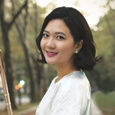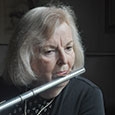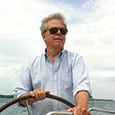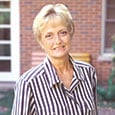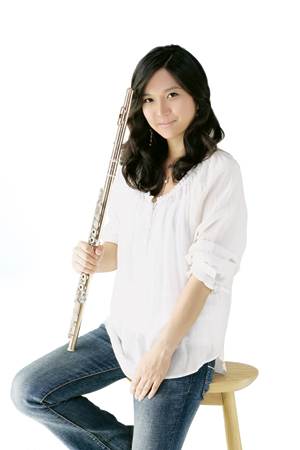 Yoobin Son joined the New York Philharmonic as second flute in November 2012, having served as the principal flute of the Mostly Mozart Festival Orchestra since 2010 and acting principal flute of the New Haven Symphony during the 2008-2009 season.
Yoobin Son joined the New York Philharmonic as second flute in November 2012, having served as the principal flute of the Mostly Mozart Festival Orchestra since 2010 and acting principal flute of the New Haven Symphony during the 2008-2009 season.
Born in Seoul, Korea, Yoobin Son moved to the United States when she was 14 years old. She graduated from the Juilliard Pre-College Division (Bradley Garner, flute professor), earned a BM from The Curtis Institute (Jeffrey Khaner, flute professor), MM from the Yale School of Music (Ransom Wilson, flute professor), and PS and Artist Diploma from the Manhattan School of Music (Robert Langevin, flute professor).
What was your New York Philharmonic audition like?
I still can’t believe how I got through it. The whole process consisted of three rounds over 10 days: a preliminary, semi-final, and final round. The preliminary round was different from other prelims that I had taken because the judges listened to each candidate for about 15 minutes, which is quite a long time for a preliminary round. The semi-final round was particularly difficult as I had to stay in the hall from noon until 7:30 p.m. First we drew numbers and then I had to wait until it was my time to play the 20-minute solo round. Then I had to wait again to find out if I had been chosen to play the ensemble round with principal flutist Robert Langevin. (Tip for audition-takers: always bring granola bars, bananas, chocolates or whatever you eat when you are nervous and hungry because you never know how long the day is going to be. If I had not had two granola bars with me that day, I might not now be the second flutist in the New York Phil.) In the ensemble round, I played duo excerpts with Langevin, and I remember enjoying blending my sound to his on the stage of Avery Fisher Hall.
The final round was one week later. The waiting and anticipation for that day was really difficult. Since I knew I was technically ready with the audition repertoire, I tried to not over practice. Instead I tried to keep in the best physical condition possible: lots of vitamins, good food and enough sleep.
The final round was also on the stage of Avery Fisher Hall; however, the screen had been removed so I could now see who was listening to me. The audience included the music director, conductor Alan Gilbert, and audition committee members from the woodwind section. I enjoyed playing the final round focusing on performing as if I were giving a recital. I played the second and third movements of the Mozart Concerto in G, K.313, the Enesco Cantabile and Presto, and the slow movement of the Vivaldi Piccolo Concerto for the first part of the final round. After that the committee asked me to play a few more excerpts and then there was another ensemble round with Langevin. We played pretty much everything that was on the audition list plus sightreading a few famous duo excerpts.
What is a typical schedule for a week?
We have eight services per week which usually consists of four rehearsals and four performances. Since Monday is a free day, we begin the week on Tuesday with a morning rehearsal and have hold over concerts (a program from the previous week) on most Tuesdays. On Wednesday we have a rehearsal in the morning and another in the afternoon. On Thursday there is a morning rehearsal and an evening concert. Then we have concerts on Friday and Saturday.
It is a busy schedule with lots of music to cover. The New York Philharmonic is known for being the busiest orchestra in the world based on the number of public concerts it gives each year. It is quite amazing how limited rehearsal time we have, considering the length of music we perform. Everyone is ready to go from the first rehearsal. I still am amazed by the dedication of my colleagues. Robert Langevin is the principal flute, Sandra Church is the associate principal flute, and Mindy Kaufman plays solo piccolo and flute. They have been welcoming and supportive from the very beginning.
Even though you have only been in the orchestra for a short while, do you have any favorite moments?
I had a great time during our European tour last May. We performed in Turkey, Switzerland, Germany, and Austria. It was a great opportunity to get to know colleagues more personally. When we are in New York, everyone is busy with their lives so it is hard to make time to get together outside of work. A tour is always a nice bonding period. I am really looking forward to the Asia tour in February 2014. Since the tour starts in Korea, I will get to see my family and friends.
Another favorite moment was this season’s opening week concerts. The program included Ravel’s Alborada del gracioso, which features lots of triple tonguing in the flutes. I worked on it the whole summer. Even though I was nervous during the performances, I think it went well.
What led you to your interest in music and the flute in particular?
When I was young, my mom started taking flute lessons because she heard that playing the flute promoted good health. When I heard the beautiful sound of the flute, I was drawn into the instrument and began taking over her lessons. Although neither of my parents are musicians, my paternal grandfather is a famous 1960s Korean pop songwriter. I grew up listening to his guitar playing when he was composing music. He has always been an enthusiastic supporter of my musical education and career. He is now 93 years old and in very good health. This past September he was able to attend my concert in Korea where I performed the Mozart Concerto in G at the Seoul Arts Center. I heard from my parents that he got very emotional and cried after hearing my performance.
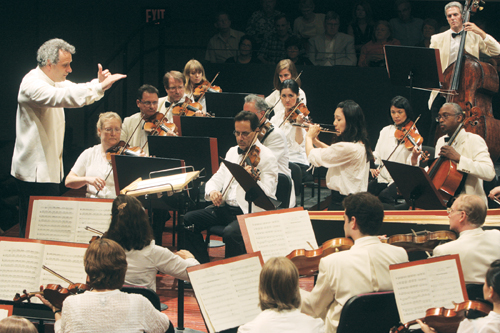
What do you remember of your early flute studies in Korea and Florida.
As I recall, I studied out of the Trevor Wye series of books. When I was 10, after a year of lessons from a neighborhood teacher, I went to study with Ui-kyung Park. She assigned the etudes of Andersen, Quantz; the scales from the 17 Big Daily Exercises by Taffanel & Gaubert; and Marcel Moyse’s Enseignement Complet de la Flute (31 volumes in the Leduc edition). I am so glad that I had her as a teacher when I was young. She had an organized system for me right from my beginner days and she made sure I learned everything correctly from the beginning.
When I was in the sixth grade, I attended a Julius Baker masterclass in Jeju Island in Korea. I was ecstatic to have a chance to play for him. Best of all, he liked my playing. I remember him as a very kind and generous person who reminded me of my grandfather. He wanted me to come to America to study with him, but my parents thought I was too young. However, that incident planted the idea of studying music abroad.
I attended the Yewon School (an arts middle school in Seoul). It was very exciting to meet so many friends who had the same interests as me. I had the most fun days of my life at Yewon, sharing dreams with friends and motivating each other. However, there are limitations in the Korean educational system as music students there only learn a few pieces a year, which were requirements for competitions. Moreover, it is a very competitive system, which I think is not the right way to grow as a musician. So my parents and my teacher, Ui-kyung Park, got me to think seriously about going abroad to study and expand my view.
In 1999 I moved to Tampa, Florida to live with my aunt’s family. My parents thought that moving there would be a smooth transition to get used to the language and culture. It proved to be a good decision. I had fun with my cousins who were similar in age to me. Since there were few Koreans around, I learned English fairly quickly.
I began studying with Catherine Landmeyer, who is a former principal flutist of The Florida Orchestra. She was a wonderful teacher and person and helped me a lot despite the language barrier. She encouraged me to enter the Florida Orchestra’s Young Artist competition, and I won the grand prize. It gave me a chance to perform the Mozart Concerto in G Major with the Florida Orchestra the next year. The band teacher in Tampa loved my playing and invited me to play a solo on the band concert so I had some nice performing opportunities.
After spending a year in Florida, I moved to New Jersey to be surrounded by more cultural and musical events. I attended the Juilliard School’s pre-college division and studied with Bradley Garner. He was caring and supportive, and with his guidance, I was able to focus on developing myself as a flutist. I won several competitions during those years; first prize in the NFA’s High School Soloist competition, Conductor’s prize in New Jersey Symphony’s Young Artist auditions, and 1st prize in the William Paterson University’s concerto competition.
When you studied at the Curtis Institute, what was the curriculum like?
Those were very challenging days. My flute professor Jeffrey Khaner wanted me to bring four different etudes and an entire piece of music (rehearsed and ready to perform with the pianist) for a lesson every week. Among those etudes there were Bozza 14 Arabesques, Paganini 24 Caprices, Bitsch 12 Etudes, Jeanjean Modern Etudes, and the Moyse, 12 Studies of Virtuosity based on Chopin. To learn all this music in one week, I had no choice but to become very diligent and disciplined with my practicing. I expanded my repertoire a lot during four years at Curtis, as you can imagine. In retrospect, I am really thankful that Mr. Khaner pushed me hard. It was just what I needed at the time. I was also fortunate to hear him play as principal flute in the Philadelphia Orchestra each week thanks to the free tickets that were offered to Curtis students. He is a total rock star.
I started developing a love and passion for playing in the orchestra from my Curtis years. The Curtis Symphony sounds amazing; to the point where it is hard to believe that it is a student orchestra. All the students take pride in it, and they treat orchestra performance very seriously. I was shocked at first, because it was run like a professional orchestra. We covered one piece a week, starting the week with sectionals, then two full orchestra rehearsals, and finishing with a Reading session on Saturdays, which actually meant performing in front of an audience. Otto-Werner Mueller was the conductor at the time, and he emphasized creating a unified sound and how to bring out the different characters in music. I worked with other great conductors who guest conducted, including Sir Simon Rattle, Christoph Eschenbach, Sir Roger Norrington, and Vladimir Jurowski.
I also learned so much about orchestral ensemble playing from the Wind Class that was led by Richard Woodhams, principal oboist of the Philadelphia Orchestra. We experimented in great detail with how the wind instruments work together in an orchestral setting. These details included how the woodwinds blend with each other, how various colorings are created with different instrumentation, and learning when you should play out your solo lines or be the supporting role and letting other solo lines come out.
Wind players are required to play in woodwind quintets every year at Curtis. Those years of experience of learning to play with other wind instruments were so valuable because it is crucial to figure out how differently they work from the flute. Wind instruments all make sound in different ways (unlike string instruments), and yet we have to play together in an orchestra. The first woodwind quintet I learned was the Carl Nielsen woodwind quintet, and the last was the Jongen woodwind quintet. Needless to say, there was lots of repertoire exploration involved. I played as much chamber music as possible, both with string players and pianists. I found out that working with non-woodwind players (both students and coaches) gave me a different view of music, that allowed me to focus more on musical elements, rather than technical aspects.
What lead to your decision to study at Yale for graduate school?
I attended Yale University’s flute professor Ransom Wilson’s master class in Tuscany, Italy in the summer of 2005 and was impressed with his teaching. He was able to isolate any student’s problem within minutes of listening, and I could see and hear an improvement on the spot. I decided that I wanted to study with him. Wilson has a fresh and interesting approach to music, which I think originates from his being a conductor, as well as a flutist.
My first professional position as an orchestral musician happened while I was at Yale. The New Haven Symphony orchestra had a one-year position open for the principal flute. The position worked perfectly with my school schedule, because it is not a full-time orchestra. I learned both orchestral repertoire and how to work in a professional orchestral setting. (Things like being on time, being prepared, warm-up etiquettes, how to deal with personnel manager and librarians, etc.)
Also during this time I was able to participate in the Marlboro Music Festival in the summers of 2008 and 2009. Because of my passion for chamber music, I had dreamed of going to Marlboro for years. Luckily, there was an opening for flute, and I was invited to the festival after an audition. (Auditions for wind instruments don’t happen regularly for Marlboro.) It was such an amazing experience because I had the opportunity to make music with some of the best musicians from all over the world. With some ensembles there, I got to rehearse and explore repertoire for five to six weeks, which is a rare opportunity.
Why did you decide to attend the Manhattan School of Music Orchestral Performance and Artist Diploma programs?
I had always wanted to study with Robert Langevin, because I grew up listening to his playing with the New York Philharmonic beginning in my Juilliard pre-college days. For me, he had the ideal flute playing for an orchestra. I first was accepted into the Manhattan School of Music’s Orchestral Performance program which meant I could study with him privately. He was inspiring and helpful when I was preparing for auditions, offering practical tips that he had developed from years of experience. I auditioned for the Artist Diploma program at MSM for my second year. It is a highly selective full scholarship program that admits only one or two students per year. I could not believe it when I was chosen to do the program, especially since they usually prefer pianists or string players to flutists. This gave me another year to work with Langevin and focus on upcoming performance opportunities.
What is Ensemble ACJW?
Ensemble ACJW is an acronym for: Academy at Carnegie Hall, The Juilliard School, and Weill Music Institute. It was created in 2007 by Clive Gillinson, executive and artistic director of Carnegie Hall and Joseph W. Polisi, the president of The Juilliard School. Ensemble ACJW is comprised of a select group of young professional musicians who are fellows in a two-year program that supports them in building careers as top-notch performers and as innovative concert programmers and educators. I was a fellow in the program from 2010–2012. Since I was the only flutist in the ensemble, I had the opportunity to play a wide-range of repertoire. This program offered me the chance to perform and work with students in the New York public school system too.
What advice would you give to someone who has career aspirations similar to yours?
You really have to love music. It is the luckiest thing to do what you love for a living, but it is a difficult, competitive field. There simply are not that many positions available for the vast number of flutists out there. The audition process itself can tire you out, but try to be hopeful and keep believing in yourself. You need to be patient and disciplined. I also think you should love being on stage. I really enjoy the connection with the audience when I perform.
How do you prepare for the music you perform each week?
I usually check out the music from the orchestra library about four weeks before the performance week. Sometimes I check it out even earlier, depending on the repertoire. I plan the weeks accordingly, and I usually end up practicing upcoming programs two to three weeks prior to the concert.
I play chromatic scale long tones religiously every day, and I vary the dynamics each time (f-p or p-f). Long tones are a great method to relax and warm up your embouchure. My sound definitely opens up and gets richer after I do this practicing. I also practice the Taffanel-Gaubert scale exercises in different articulations and double/tripled tongued.
* * *
Blending in an Orchestra
• Do not use too much vibrato, or use none at all when playing with instruments that do not use vibrato, such as clarinets and brass. It can distort the pitch and will get in the way of blending.
• When playing chords, figure out what your role is in the chord and adjust accordingly. Unless you are the root of a chord, play less. If you are playing in the higher register, play lighter. It is always best to build a chord with healthy and stable lower notes and less in the higher range.
